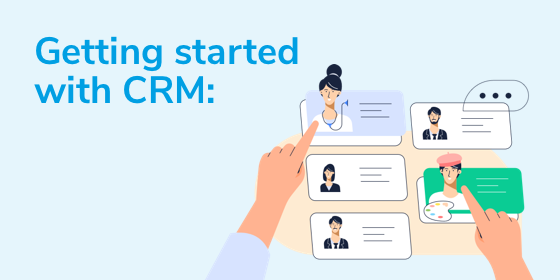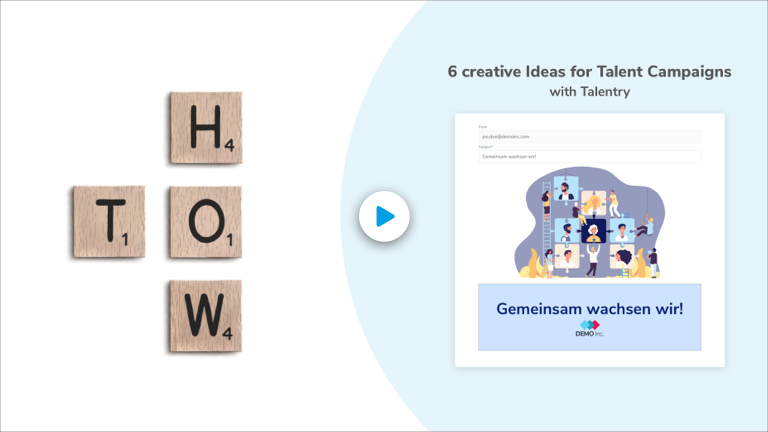How to personalize engagements across multiple talent touchpoints

As consumers of a new product or service, we expect the buying experience to be positive and engaging at every touchpoint. We want a webchat to segue seamlessly to a contact center agent before being concluded in store. We get terribly frustrated if we have to ‘describe the want’ again and again, at each stage of the journey.
If we’re buying a car, for instance, we don’t expect to have to explain our needs to three different agents as we move through the purchasing system. If we do, we decide pretty quickly that we are NOT valued customers for this particular brand, and we go elsewhere.
Don’t get me wrong. Buying your favorite chocolate bar doesn’t have to be this complex—but brand perception and your taste bud preferences will clearly have a part to play in the decision. And when it comes to major purchases, when there will be multiple engagements before you finally sign a contract, each interaction will be critical to your brand perception.
Is your brand a destination of choice?
It’s a similar story with job seekers. Impressions of a brand are as critical an influencer of a career move as they are of significant purchase. For a job applicant, engaging with a brand, then a sourcing team, before concluding the journey with the hiring manager should be a seamless experience and every interaction, across every touchpoint—career fair, networking event, online chat, phone call, email, or interview—needs to be personally relevant.
By logging communications and building out a profile of the candidate’s background, location, experience, and availability across all touchpoints, recruiters and sourcing teams can help ensure that your brand becomes a job seeker’s destination of choice.
CRM is the key to personalization
Personalization is a decisive factor. In fact, in a hyper-digital age where experience is predicted by Gartner to become ever more influential over both price and product, it’s critical to brand success. The key to delivering personalized experiences: CUSTOMER or CANDIDATE Relationship Management (CRM).
Marketing teams can leverage CUSTOMER Relationship Management to furnish prospective customers with personalized content, at the right time and through the right channel (subject to GDPR compliance of course).
Recruiters, similarly, can use CANDIDATE Relationship Management to target the right candidates with the right branding materials at the right time through the right channel (also subject to GDPR compliance).
Be proactive to attract passive talent
This kind of proactive mindset is exactly what’s needed to attract passive candidates—people not actively looking for a job but who could be persuaded to move with the right offer.
Just like a marketer, you have to give such people a solution to a problem they maybe didn’t even know they had. You also have to be one step ahead, delivering today what might be relevant for talent in the future. A well-managed, dynamic process that informs the candidate about the brand and builds their trust will increase your chances of beating the competition to win that candidate; creating a Unique Selling Point (USP) in the ‘war for talent’.
Promising candidates can be classed as ‘targets’, sourced through a variety of channels, and their data placed in a talent pool with an automated GDPR compliance opt in/out process. Recruiters can then use smart tech to parse the talent into specific pools. Volume recruiting initiatives may be more focussed on low skilled candidates, whilst many other roles are more aligned with specific skill sets and levels of experience, so quality is key. Sourcing teams that oversee different roles have a common goal: increase longevity and reduce attrition.
Employees are the best recruiters
As brand ambassadors, referring to personal contacts, employees have proven to be one of the more cost-effective recruiting channels. What’s more, employee referrals result in stronger candidates who tend to stick around for longer because they have a more rounded insight into the organization.
So why do so many organizations still treat an Employee Referral Programme (ERP) as a secondary recruitment source? In the consumer world, customer experience prompts recommendations and is key to creating happy customers. Yet many employers tend not to actively promote their ERP schemes, or if they do, they make them too complex for an employee to engage with.
By simplifying the referral process, proactively engaging employees, and arming them with content and vacancies to share on their networks, the coverage through volume could help ‘volume recruiters’ as well as addressing diversification initiatives. Through instant messaging, this approach could also support the targeted selection of high-quality recommendations.
Employees, after all, are a better judge of character, certainly of people they know, and are thus more likely to recommend someone who is a good ‘cultural’ and/or ‘profile’ fit, as opposed to a role-specific option.
By encouraging employees to recommend talent we can loop back into the CRM and leverage the power of a system of engagement, rather than a process (Applicant Tracking System). If talent pools begin to fill up with high caliber recommendations, who are a great fit for the organization, sourcing teams will be able to make recommendations more quickly to the hiring managers, with A&B caliber applicants. Significant efficiencies will be created, as well as cost savings. Better yet, those ‘2nd place’ candidates won’t end up over the road at your main competitor.
Powering ahead
To conclude. Sourcing teams need to create a USP by leveraging available technology to create a positive experience for candidates across each step of their journey. An ability to personalize engagements is a real value add and likely to become a competitive advantage in the war for talent. HR leaders now have a seat at the executive table and the mandate to deliver on KPIs that influence business performance is becoming ever more pertinent
KPIs empower Talent Acquisition (TA) teams with deep analytical insights into employee engagement and ERP performance will become key to delivering on these. Populating talent pools with referred candidates is a logical next step as industry analysis suggests that this sourcing channel delivers better quality, creates significant efficiencies and reduces attrition.
If you want to stay ahead in the war for talent, we recommend improving your ERP performance and populating a CRM with high-quality candidates. By leveraging the power of a CRM, your sourcing teams will be able to significantly boost your chances of finding the very best talent. Personalizing engagements across multiple touchpoints throughout their journey will ensure that your brand becomes the destination of choice.





.png)


